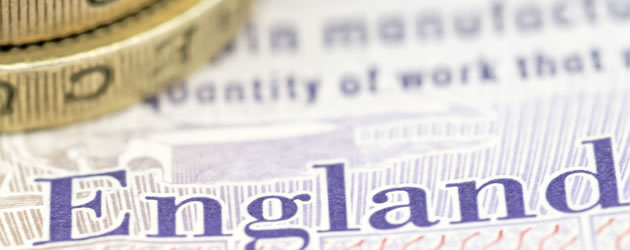
The Pound to US Dollar exchange rate (GBP/USD) struck a 3-year low yesterday as soft UK trade data and weak Industrial and Manufacturing Production figures reflected poorly on the UK economy, causing traders to speculate that the Bank of England will step in with additional quantitative easing measures.
Sterling declined by -1.2 cents yesterday reaching a 3-year low of 1.4813 before settling close to technical support levels at 1.4831.
The Pound’s disastrous day on the currency markets was driven by a -2.3% annual fall in Industrial Production and a -2.9% drop in Manufacturing Production. Furthermore, it was reported that the UK Trade Balance declined by -£2.4 billion in May, which brought the overall deficit to a 6-month high.
The decidedly soft dataset signalled that Britain is not experiencing an export-led recovery, as the government had hoped, but rather a rise in economic output thanks to growing consumption and escalating house prices. It is possible that GDP still expanded by 0.6% in the second quarter, indeed the NIESR released a report suggesting growth of this much in the second three months of 2013, but not for the ‘right’ reasons.
Export growth is more sustainable, and in the long run more profitable due to the immensely faster growth levels of the BRIC economies (Brazil, Russia, India and China), and for this reason traders are less impressed with the latest UK economic indicators than they would have been if GDP growth had been driven by far-reaching exports.
The Office for National Statistics reported that exports to non-EU countries rose by over four times as much as to those within the European Union during the three months to May, but with Britain still running a budget deficit during this time period the improvement was not considered strong enough.
During the afternoon yesterday the IMF released a report suggesting that British GDP will expand by 0.9% this year, higher than previous estimated of 0.6%. However, the optimistic forecast was overshadowed by a downgrade to the 2013 global growth projection from 3.3% to 3.1%, which played into the hands of the US Dollar and stoked risk aversion flows towards the world’s premier safe haven currency.
The Pound has fallen by around 9 cents against the US Dollar during the last three weeks, and further declines appear likely due to the diverging Central Bank biases of the Bank of England and the Federal Reserve.
GBP/USD plummeted through significant psychological support levels at 1.5000 last week as traders reacted to some strong US Non-farm Payroll figures, which boosted QE3 tapering hopes in the US, whilst Sterling remained susceptible to additional asset purchases in the wake of a dovish BoE policy statement.
Another important support level for GBP/USD, 1.4831, was breached momentarily yesterday in response to the weak UK trade and Industrial Production numbers. If Sterling breaks below 1.4831 again it is entirely possible that the Pound could enter free-fall, possibly plunging as far as 2010’s low of 1.4258. Any indications from the BoE that it is considering enhanced monetary easing, or any hints from the Fed that it is on the verge of slashing asset purchases, would accelerate the Pound’s decline against the US Dollar.

Comments are closed.